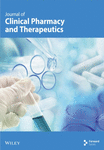An investigation into antidiabetic medication prescribing in South Africa
Abstract
Background: The number of people with diabetes in Africa is expected to triple in the next 15 years, which will have a significant impact on the prescribing and use of antidiabetic medication. Objective: The primary aim of this study was to investigate the prescribing patterns of antidiabetic medication that are used on a chronic basis in South Africa. Method: Prescribing data of 1100 diabetic patients were retrospectively analysed over a 1-year period. Results: The average age of patients was 53·2 years (SD=16·4 years), with more male than female patients. The oral antidiabetic drugs accounted for 67·4% of all the antidiabetic products prescribed, with the sulphonylureas the most frequently prescribed antidiabetic therapeutic subgroup. Glicazide was the single most frequently prescribed oral antidiabetic drug, accounting for 38·2% of all oral agents. Biphasic insulin was the most frequently prescribed class of insulin. Fifty-seven patients were using insulin as well as one or more oral antidiabetic drugs. Cardiovascular system drugs, nervous system drugs and drugs acting on the alimentary tract and metabolism together accounted for more than half of the drugs that were prescribed concurrently with antidiabetic medication. Conclusion: Further research on the prescribing of antidiabetic medication should be conducted focusing on the qualitative aspects of treatment and treatment costs as well as studies on antidiabetic treatment in the public health sector.




